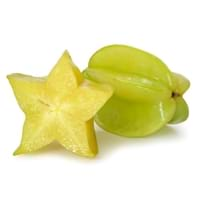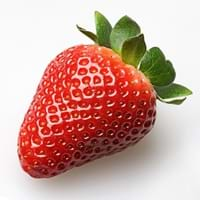Health Benefits
Cancer prevention, Heat stroke treatment
Anti depressant, Asthma treatment, Cancer prevention, Heart care, Improves stomach health, Increases metabolic rate, Prevents constipation
General Benefits
Anti oxidant properties, Anti-inflammatory properties, Digestive aid, Maintains healthy cholesterol level, Treatment of sore eyes
Anti-inflammatory properties, Boosts immune system, Controls blood pressure, Eye care, Maintains healthy cholesterol level, Strengthens bones
Skin Benefits
Anti-aging benefits, Heals sunburn, Skin rejuvenation
Anti-aging benefits, Brightens and lightens complexion, Skin cleansing, Treatment of acne, Treatment of skin diseases
Hair Benefits
Promotes longer and healthier hair, Protects hair
Promotes longer and healthier hair, Shiny hair, Treatment of dandruff
Allergy Symptoms
NA
Chest pains, Eczema, Hives inside the cheeks, Itching, Skin rash, Swelling, Watery eyes
Side Effects
Nausea, Vomiting
Allergic reaction
Best Time to Eat
As a snack in the late afternoon, Eat the fresh ones, avoid mixing with any other foods, don't eat after meal., Strictly avoid empty stomach
As a snack in the late afternoon, Don't consume at night and before bed, Don't eat after meal, Morning time (before lunch), Strictly avoid empty stomach
Vitamin B5 (Pantothenic Acid)
Vitamin C (Ascorbic Acid)
Vitamin K (Phyllochinone)
Phytosterol
Not Available
Calories in Fresh Fruit with Peel
Calories in Fresh Fruit without Peel
Not Available
Not Available
Calories in Frozen Form
Not Available
Calories in Canned Form
Not Available
Calories in Juice
Not Available
Season
Autumn, Spring, Summer
Spring, Summer
Varieties
King, Bell, Sri Kembangan, Arkin and Fwang Tung
Allstar, Annapolis, Cavendish, Chandler, Earliglow, Flavorfest, Honeoye, Jewel, Northeaster, San Andreas, Seascape, Tribute and Tristar
Color
Golden yellow, Green
Bright red
Inside Color
Yellowish Green
Pink
Shape
Oval and Star(Cross section)
Conical
Taste
Crisp, Juicy, Sweet
Sour-Sweet
Grows on
Not Available
Bushes
Soil Type
Loam, Well-drained
Loam
Climatic Conditions
Moist, Warm to hot climate
Cold
Facts about
- When carambola is cut horizontally, it forms a star.
- It is believed that carambola helps to cure hangover.
- Entire carambola is edible, including its skin.
- 2 varieties of carambola are cultivated: tart & sweet.
- Strawberry is the only fruit with seeds on its covering.
- Belgium has a museum dedicated to strawberries.
- Americans eat almost 3.4 pounds of fresh strawberries each year.
- They are believed to be an aphrodisiac.
Top Producer
Taiwan
United States of America
Other Countries
Australia, Guyana, India, Israel, Malaysia, Philippines, United States of America
Egypt, Mexico, Russia, Spain, Turkey
Top Importer
Europe
Canada
Top Exporter
Malaysia
United States of America
Botanical Name
Averrhoa carambola
Fragaria Ananassa
Synonym
Not Available
Not Available
Subkingdom
Tracheobionta
Tracheobionta
Division
Magnoliophyta
Magnoliophyta
Class
Magnoliopsida
Magnoliopsida
Family
Oxalidaceae
Rosaceae
Species
A. carambola
F. ananassa
Generic Group
Not Available
Rose
Difference Between Carambola and Strawberry
We might think that Carambola and Strawberry are similar with respect to nutritional value and health benefits. But the nutrient content of both fruits is different. Carambola and Strawberry Facts such as their taste, shape, color, and size are also distinct. The difference between Carambola and Strawberry is explained here.
The amount of calories in 100 gm of fresh Carambola and Strawberry with peel is 31.00 kcal and 33.00 kcal and the amount of calories without peel is Not Available and Not Available respectively. Thus, Carambola and Strawberry belong to and category.These fruits might or might not differ with respect to their scientific classification. The order of Carambola and Strawberry is Oxalidales and Rosales respectively. Carambola belongs to Oxalidaceae family and Strawberry belongs to Rosaceae family. Carambola belongs to Averrhoa genus of A. carambola species and Strawberry belongs to Fragaria genus of F. ananassa species. Beings plants, both fruits belong to Plantae Kingdom.









